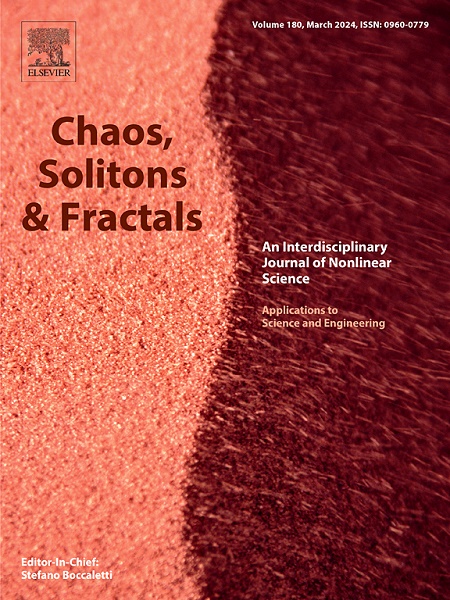Data analysis of dynamical system for the optimization of disease dynamics through Neural Networks Paradigm
IF 5.3
1区 数学
Q1 MATHEMATICS, INTERDISCIPLINARY APPLICATIONS
引用次数: 0
Abstract
Vaccine coverage and non-pharmaceutical interventions have great importance relative to public health in the current scenario of pandemic throughout the world. A compartmental model for assessing the vaccine and community contact rate (in light of social-distancing and isolation) coverage in symptomatic and asymptomatic public. In most biological phenomena, particularly infectious diseases, fractional models capture crossover behavior and provide deeper insight. Also, the disease informed neural network embedded with the proposed model to deduce the temporal evolution dynamics of the COVID-19 model. The Reproduction number determines the severity of disease computed by the next-generation approach. The mathematical model assesses the dynamics of Corona-virus based on biological parameters, which are estimated from recorded data by the least square curve technique. The proposed model shows precise predictions of the real cases. The COVID-19 data of Pakistan, suggest that the vaccine efficacy is found to be useful with adoption of moderately (50% reduction of baseline value) could prevent 70%–80% of the projected infected persons over 100 days. While the contact rates impact on epidemiological outcomes is highly nonlinear, which indicates the high value to eradicate the pandemic if the underlying contact rate is relatively low. Our study urge that the contact rates (social distancing and isolation etc.) and vaccine coverage with high efficacy has probably high value in curtailing the burden of the pandemic. Additionally, we discuss how neural networks may predict disease spread and do so with the robustness and effectiveness of neural networks. The deep learning method predicts the dynamics with forecast their progression and demonstrates the high potential in combination with compartmental model. Furthermore, the results demonstrate that neural networks outperform traditional approaches in forecasting complex disease dynamics, determining crucial thresholds, and refining suppression strategies, offering important public health insights. Additionally, this strategy opens the door for more extensive artificial intelligence integration in healthcare optimization.
求助全文
约1分钟内获得全文
求助全文
来源期刊

Chaos Solitons & Fractals
物理-数学跨学科应用
CiteScore
13.20
自引率
10.30%
发文量
1087
审稿时长
9 months
期刊介绍:
Chaos, Solitons & Fractals strives to establish itself as a premier journal in the interdisciplinary realm of Nonlinear Science, Non-equilibrium, and Complex Phenomena. It welcomes submissions covering a broad spectrum of topics within this field, including dynamics, non-equilibrium processes in physics, chemistry, and geophysics, complex matter and networks, mathematical models, computational biology, applications to quantum and mesoscopic phenomena, fluctuations and random processes, self-organization, and social phenomena.
 求助内容:
求助内容: 应助结果提醒方式:
应助结果提醒方式:


